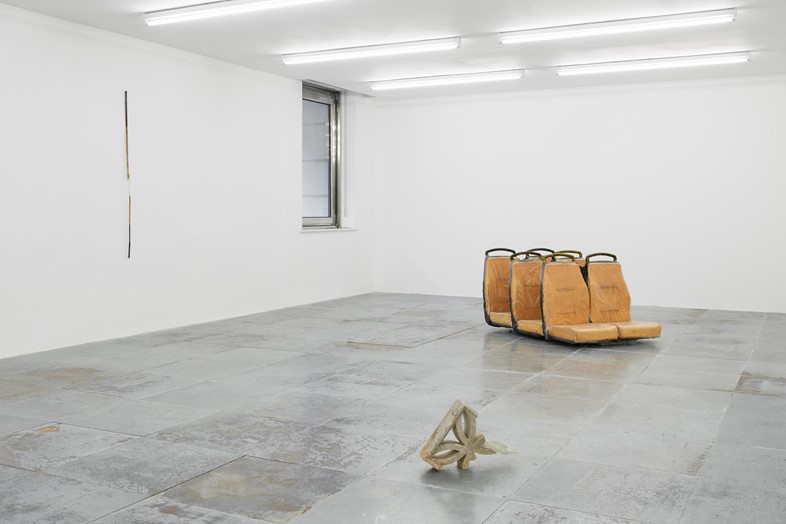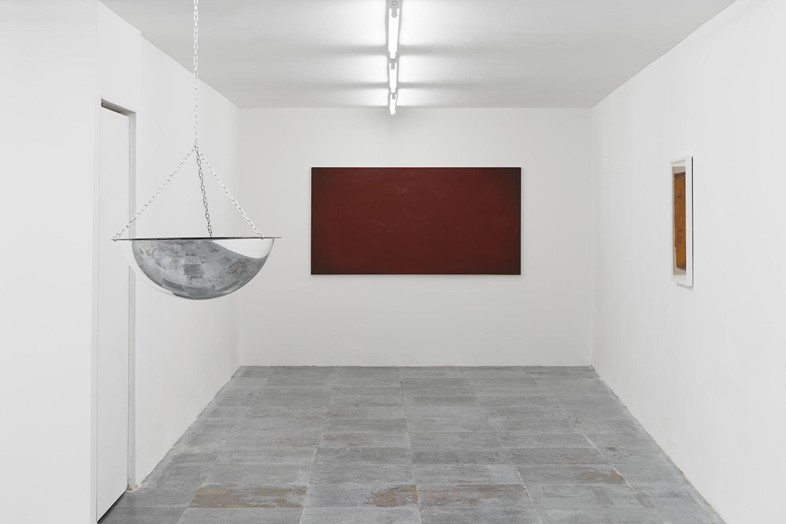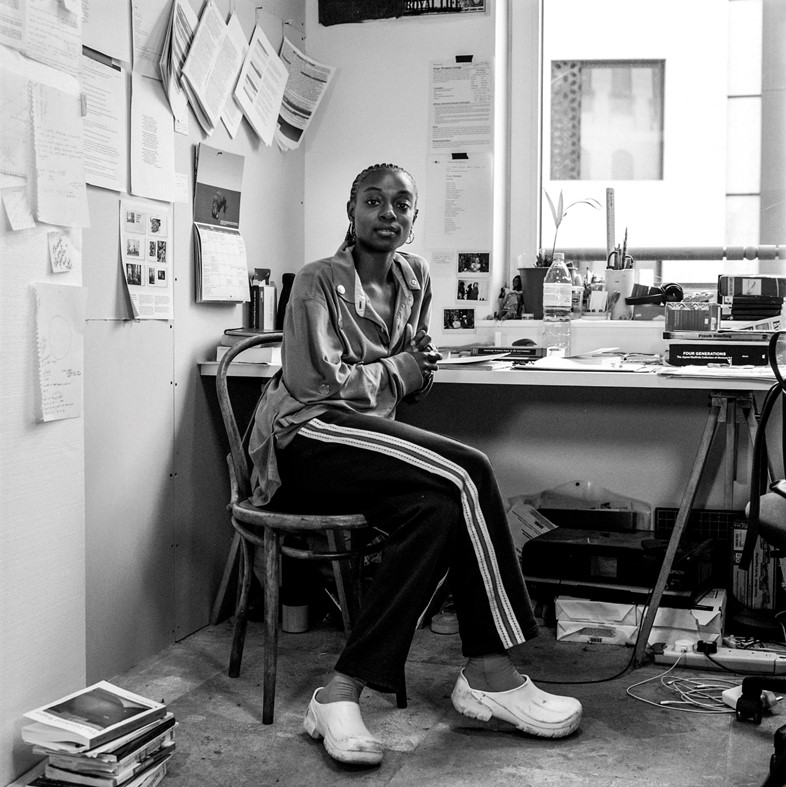Speaking to Sagal Mohammed, British-Jamaican artist Rhea Dillon shares the layered meaning behind her debut solo exhibition, Nonbody Nonthing No Thing
As an artist, writer and poet, Rhea Dillon, is as creative as they come. The 25-year-old Central Saint Martins alum has been mastering her craft for years, swaying from one artistic outlet to another to convey a multitude of reflections of the world through her own, unique lens. Now, she debuts her first solo exhibition with a residency at London’s VO Curations.
Open from today, Nonbody Nonthing No Thing is a sublime series of deconstructions and reconfigurations that form a poetic exploration of Blackness through a total of seven paintings and sculptures. “People often ask me what it means to make Black art but to me, that is essentially asking me what it means to exist as myself,” says Dillon. “Being Black British is part of my ontic and ontology so it’s always present in my work because it is me.” The exhibition explores linguistics as a means to understanding objects and the stories they tell. “I’m a poet so language is really intriguing and powerful to me.”

In one particular piece, she unravels the idea of the words ‘landing’ versus ‘arrival’ and the stark difference in meaning between them for diasporic generations. “When I think of the word ‘landing’ it feels very much like you don’t actually know where you are going, you are just plunged in a place. It’s so relevant to the diasporic journey that many people with African or Caribbean descent like myself can relate to. My grandmother and my great-grandmother were part of the Windrush generation and even though they were invited to come and work in the UK, there was still a feeling of displacement when they got here. They landed in the western world and were pushed to the edges of society both figuratively and literally as they were confined to specific areas in London like Notting Hill and Brixton, where my family is from.” She compares this notion to the idea of ‘arriving’, which feels more assertive and intentional. “Unlike landing, arriving feels like an act in your control. When I book a holiday or decide to go to LA for a month I’m choosing to arrive somewhere. There’s a generational difference there because I’ve always had access to that even as a kid whereas my mum would always tell me that she didn’t go on her first holiday until she was in her late twenties. I’m getting to arrive in places in a way that my parents and my ancestors never did and that’s the message.”
This type of profound metaphoric storytelling has always been at the core of Dillon’s work, though the exhibition is a creative shift for the artist, who first gained prominence for her work in fashion photography and filmmaking. In 2018, while still studying fashion communication and promotion at Central Saint Martins, Dillon created a film in conjunction with Nowness titled Process – a cinematic exploration of the process of Afro hair. A year later, she premiered The Name I Call Myself, another multilayered film that provides a loving insight into the Black British Queer community. “I love fashion and filmmaking as a medium but I have always been more drawn to other forms of art,” Dillon admits. “That’s not to say I will never make film or photography again, I’ll always do what feels right for me.”

That being said, Dillon, who is second-generation British-Jamaican, is aware of the institutionalised classism still prevalent in the art world. “As a Black, queer woman from a low socio-economic background, I’m well aware of the elitism and classism in this industry but I think it’s also so much about confidence. I read a lot of work by Black authors and creatives who went against the status quo of their time to pursue what they wanted and they went on to become revolutionaries. I’m really inspired by that.”
This is reflected in Dillon’s work, which often blends mighty references to the likes WEB Du Bois, Vanley Burke and Audre Lorde, with her own modern experiences and observations of society and what Blackness looks and feels like today. In Nonbody Nonthing No Thing – a title inspired by American artist Robert Smithson’s 1968 provisional theory of nonsite – Dillon employs abstraction as a strategy to resist objectification and what she describes as the “visible invisibility” of a Black woman’s body. As rich in meaning as it is in aesthetics, the exhibition is not one to be missed.
Nonbody Nonthing No Thing by Rhea Dillon is at VO Curations in London from 15 October-11 November 2021.
